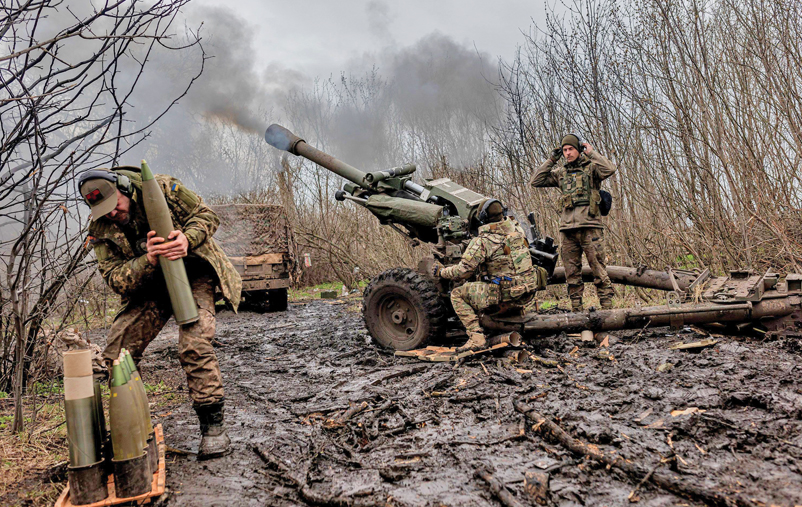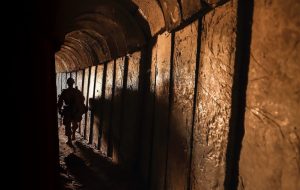The blurring of boundaries between defence and offence in military battles has led to the concept of flexible defence, which involves the strategic withdrawal of forces from a trench to a secondary defensive position as soon as the trench is under fire.
The withdrawing forces then launch a counter-attack when the attacking forces approach the abandoned trench or when they directly reach it, leaving the defending forces exposed militarily.
Historically, this tactic traces back to the Germans, who applied it during World War I until the emergence of tanks, which provided the attackers with continuous firepower, ultimately allowing them to penetrate deep defences. To counter this, the tactic of flexible defence was modified in the 1930s by isolating the attacking infantry from supporting tanks.
This was achieved by directing small arms fire at the attacking infantry while avoiding the tanks and targeting them with anti-tank guns. Natural and man-made obstacles were also employed to force tanks into specific routes where they could be targeted or come into contact with anti-tank minefields.
The Soviet Union also employed the same tactic during its victory over Germany in 1943, notably in the Battle of Kursk, one of the largest battles on the Eastern Front during World War II.
In modern military battles, the success of Russian forces in repelling the Ukrainian counter-attack in mid-2023 is attributed to their adoption of this military tactic.
This study aims to define flexible defence, explain how the battlefield is organised to accommodate this type of defence, how flexible defence is managed, and finally, how Russia applied this approach in its war against Ukraine.
Flexible Defence in Depth
Flexible defence in depth can be defined as the tactical withdrawal from land that is difficult to defend in favour of preserving the ability to move forces and operate from deeper areas, employing reserve military forces. Therefore, the primary purpose of defence is no longer to hold every inch of land, especially those tactically insignificant, which may incur significant losses for defending forces. Instead, the goal is to reduce the losses of defending forces while increasing those of the enemy, to buy time for the defending forces to launch decisive attacks in a subsequent stage.
The fundamental requirements of flexible defence lie in distributing forces in depth along a defence area that extends up to ten kilometres along the front, as well as close coordination between all branches of the armed forces, including air forces, in the battle. This concept was revolutionary at first, as it involved abandoning fixed defensive lines, which relied on trenches, and replacing them with the concept of defence in depth. The cornerstone of this concept was launching counter-attacks aimed at regaining the original line.
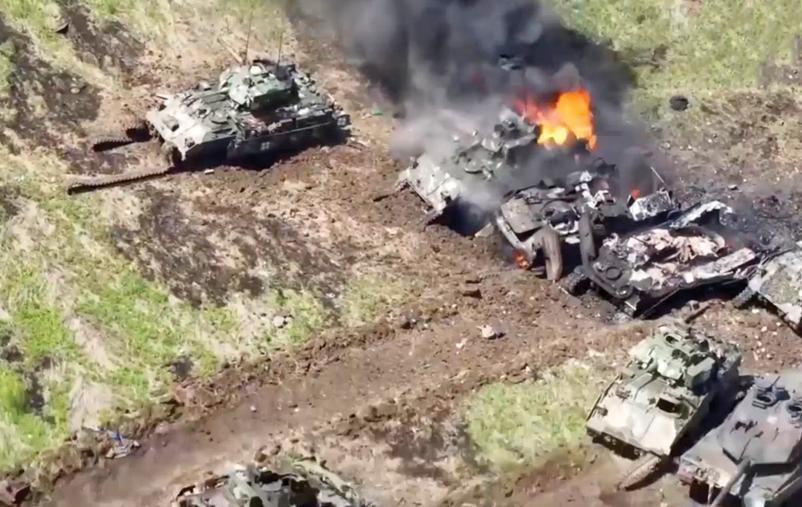
Defence Zones in Depth
According to the tactics employed by the German army during World War I, flexible defence comprises three sectors: the advanced combat zone, the battle zone, and the rear zone.
This study delves into the anatomy of each zone, including designated units and their tasks, as well as identifying the locations of heavy weapons and units for counter-attacks. This breakdown can be detailed as follows:
1. The Advanced Combat Zone: In this zone, efforts are made to deprive the enemy of the ability to identify defence areas and individual resistance nests by deploying defences over a wide area.
Moreover, extensive and active operations are conducted to hinder the enemy’s reconnaissance capabilities, impeding their tactical intelligence gathering regarding the deployment of defensive positions. Since trench lines are camouflaged, aerial reconnaissance operations find gathering detailed intelligence about these defensive positions challenging.
Furthermore, debris and remnants of destroyed military equipment around these trenches obscure any clear sign of their existence. The depth of the advanced combat zone ranges from 500 to 3000 meters.
2. The Battle Zone: This zone hosts the decisive battle, located 1000 to 2000 meters behind the original front lines. It is divided into a front and rear area. The depth of the front area ranges from 1500 to 2500 meters and accommodates a ready-to-deploy battalion. 80% of the force is organized into assault battalions to launch immediate counter-attacks, while the remaining 20% controls fortified strongpoints along the rear border of the front area with heavy machine gun emplacements. The primary purpose of the artillery is to support the counter-attacks of the assault battalions.
The rear area of the battle zone contains reserve battalions that advance as needed to control artillery fire lines. The reserve battalion is less fatigued as it usually rests in an area far from the enemy’s artillery range. To maintain their readiness, the Germans rotated their battalions every two weeks between the advanced combat zone and the battle zone.
3. Rear Zone: A complete brigade of field army reserves is stationed in this zone, positioned to launch a counter-attack within two days of an enemy attack. The reserve forces are used for planning and coordinating with forces on the front lines to launch counter-attacks. These forces are stationed in the third line of trenches 2 kilometres behind the artillery line. These reserve forces attack the enemy before they can reinforce their gains. Their objective is to crush all resistance in their path and re-establish the defensive line, even if they do not reach the original confrontation line.
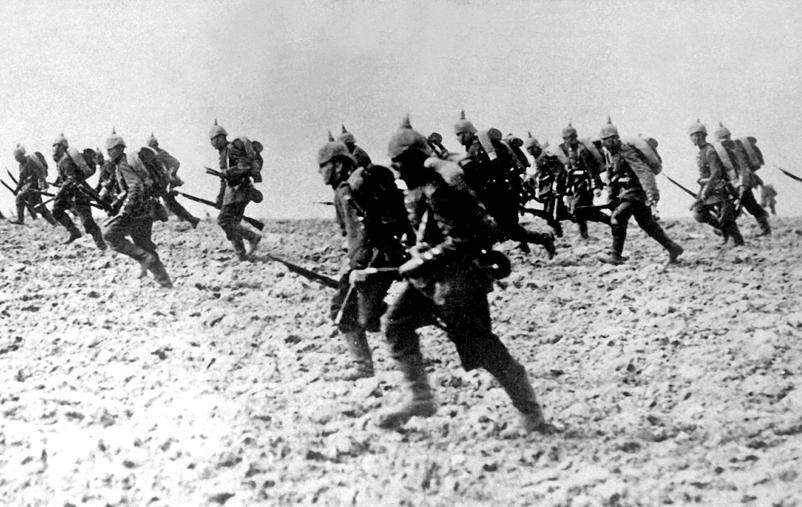
Characteristics of Flexible Defence
The history of adopting flexible defence dates back to 1916 when the German army implemented it during World War I. Flexible defence has three main characteristics, which can be detailed as follows:
1. Depth: This is achieved by constructing a series of defensive lines extending several kilometres. Depth offers two advantages. Firstly, it prevents the attacker from exploiting military momentum. Even if attacking infantry forces managed to seize the first trench at a location, they must temporarily halt to regroup and launch another attack on the next position. Thus, each successive attack depletes time, ammunition, and energy, in addition to causing more casualties. Moreover, the depth allows time for defenders to move reserve forces to attacked positions.
Secondly, the greater the depth of defensive lines, the harder it is for the attacking forces’ artillery to reach all the trenches, which helps preserve manpower for adopting a defensive position.
2. Flexibility: Flexibility entails maintaining relatively small forces in most front-line trenches and giving front-line commanders the authority to retreat to a main defensive line when facing a numerically superior force. In flexible defence, front-line units fight for a sufficient period to slow down the initial waves of the attack before withdrawing to pre-prepared positions. Initially, the idea of retreat encountered resistance, as until 1918, some officers refused to withdraw most of their men from the front-line trenches, fearing failure to repel attacking forces if they were allowed to gain a foothold, as well as fearing the withdrawal of front-line commanders at the first sign of a threat. This led to significant losses for the defending forces.
Historical examples include the Germans placing great importance on the “Vimy Ridge” hills in northern France as important combat sites for infantry forces to seek shelter, during World War I. However, these “dominant hills” were useful as they provided good observation points but lacked the necessary depth for defence, as they steeply sloped towards the plains. Due to miscalculations, the Germans attached great importance to retaining them, resulting in severe losses. The course of battles proved this conclusion wrong.
3. Counter-Attack: After withdrawing from a defensive position, defending forces launch a counter-attack as quickly as possible to regain lost territory. Thus, flexible defence also adopts offensive tactics.
To facilitate the counter-attack, defenders build concrete bunkers and strongpoints between trench lines, camouflaging them or placing them outside the artillery range, to use these positions as rallying points and firing bases to provide cover for counter-attack units.
The Russian-Ukrainian War
The ongoing conflict between Russia and Ukraine since February 2022 has passed through several stages, with military tactics varying from time to time. In the beginning of the war, specifically from February 2022 to September of the same year, Russia managed to control vast areas of Ukraine, estimated at 23% of the country’s total area, before its control receded to approximately 20% of Ukraine after the Ukrainian army’s counter-attack.
At that point, the Russian leadership decided to change its tactics in the war against Ukraine, supported by NATO. Instead of seeking a quick victory against the Ukrainian army, Russia began to adopt another strategy, which is to exhaust and deplete this army, and behind it, Western support, by following the tactic of “flexible defence.” Through this tactic, the Russian army not only managed to destroy most of the Ukrainian forces participating in the counter-attack that began in June 2023 but also paved the way for launching attacks aimed at controlling new areas in a subsequent phase.
The most prominent tactics adopted by the Russian army include building extensive fortifications, including minefields and a network of trenches, which are supported and protected by artillery, helicopters, and drones. Additionally, minefields were built, with depths ranging from 120 meters to 500 meters in some areas. Moreover, the Russian army re-planted mines in some areas attacked by the Ukrainian army and then withdrawn from, using the Russian “Zemledeliye” mine-laying rocket system, which plants mines by firing 122mm shells.
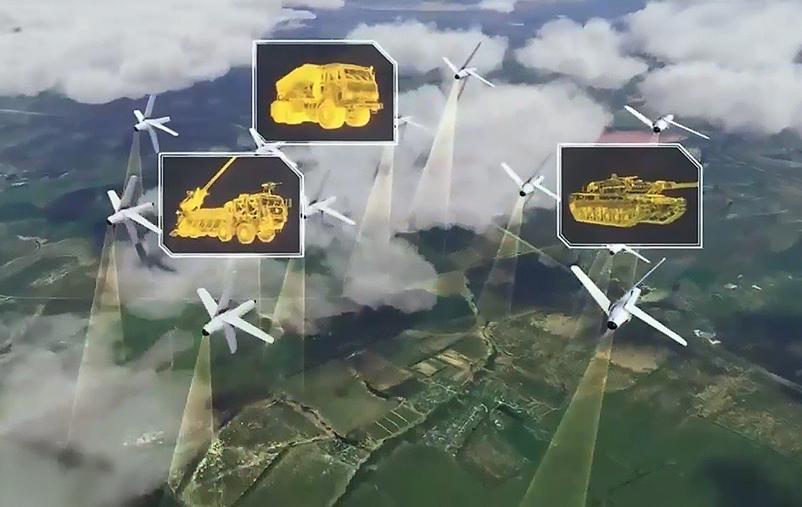
The Ukrainian forces failed to cross these fields, suffering severe losses, estimated by Russian Defence Minister Sergei Shoigu to be around 90,000 soldiers, killed and wounded, in addition to about 600 tanks and 1,900 armoured vehicles of various types, until October 2023. Western estimates also acknowledged the inability of the Ukrainian army to achieve any breakthroughs in the Russian defensive lines.
On the other hand, Russia targeted Ukrainian armoured vehicles, including tanks and mine-clearing vehicles, using drones of the ”Lancet” model. Flexible defence also requires good leadership and well-trained forces, as well as the ability to deliver decisive counter-strikes. Elements of the Russian “Spetsnaz” special forces conducted a counter-attack against Ukrainian forces in the Raboutine area during the Ukrainian army’s attempt to seize control from the Russian army.
Ammunition deployment is also part of this equation. Despite Ukraine achieving superiority in artillery fire in the summer of 2023 by launching about 200,000 artillery shells monthly, Ukraine quickly lost this advantage, especially after the depletion of NATO’s ammunition stocks, as well as the decline in its production rates compared to Ukrainian demand for it.
On the other hand, Russia has succeeded in increasing its rates of ammunition production domestically. According to intelligence estimates from NATO regarding Russian defence production, Russia produces about 250,000 artillery rounds monthly, or about 3 million annually. In contrast, a senior official in European intelligence confirmed that the United States and Europe can produce only about 1.2 million rounds annually to be sent to Kyiv. Additionally, the US Army has set a goal to produce 100,000 artillery shells monthly by the end of 2025, which is less than half of Moscow’s monthly production.
Moreover, Russia has directed intense strikes against the Ukrainian military-industrial infrastructure, forcing Kyiv to rely more on continuous Western support for weapons and making the task of matching Russian military-industrial production more difficult for Ukraine and NATO.
Finally, the Russian air force managed to strike Ukrainian forces from medium altitude, increasing the accuracy of its strikes. This was achieved after Russia successfully stripped Ukraine of its air defences and adopted a strategy aimed at exhausting Ukrainian air defences by launching, for example, about 500 ballistic missiles and drones over five days against Ukraine.
Moreover, Russia’s repeated use of this tactic drained Ukrainian air defence systems.
In conclusion, upon reviewing the concept of flexible defence, we find that it has continued to evolve throughout military history. While this concept has been unsuccessful in some cases, it has proven effective in many battles.
However, this military tactic requires many factors to succeed, such as force discipline and combat efficiency, massive industrial production, and other factors.
» By: Dr Shadi Abdelwahab
(Associate Professor at the National Defence College – Abu Dhabi)


